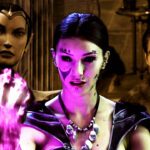As the Marvel Cinematic Universe has grown exponentially, the absence of certain key elements from the franchise’s beginning, Phase 1, is felt more acutely. Phase 1, which comprised of six movies – Iron Man (2008), The Incredible Hulk (2008), Iron Man 2 (2010), Thor (2011), Captain America: The First Avenger (2011), and The Avengers (2012) – played an important role in establishing the cinematic universe that we know today.
Although the Multiverse Saga has begun, the start of Phase 4 had its fair share of hits and misses, while the much-anticipated introduction of Kang the Conqueror in Ant-Man and the Wasp: Quantumania failed to live up to expectations in Phase 5. While Phase 1 had its flaws, there were many memorable aspects that the current universe is lacking.
Marvel Movies Were Fresh When Cinematic Universes Were Still New
The triumph of the MCU in merging diverse hero franchises into a cohesive universe has inspired numerous studios to pursue similar endeavors, yet none have achieved the same level of triumph as Marvel. During Phase 1, there were no significant cinematic universes for viewers to use as a benchmark against the MCU. Marvel Studios undertook an ambitious project to establish a decade’s worth of interconnected narrative and executed it flawlessly. Phase 1 of the MCU was an unprecedented feat on a grand scale, resulting in Marvel movies that were novel and exhilarating, an aspect now scrutinized as absent from the more recent phases of the MCU.
Marvel Movies Proved Themselves by Taking Risks
Although the MCU has received criticism lately for its cautious approach, Phase 1 had no safety net and needed to take risks because Marvel did not own the film rights to its most popular characters. Marvel was experiencing significant financial difficulties, and creating the MCU was a huge gamble. Selecting Robert Downey Jr. as the first hero of the MCU was one of Marvel’s riskiest moves, considering the actor’s widely publicized past struggles. Nonetheless, it paid off handsomely when Iron Man became a smashing hit and formed the basis for the most lucrative movie franchise ever.
Each MCU Phase 1 Film Offered a Unique Experience
The movies of Phase 1 in the MCU each had a distinct feel to them. Although the MCU has faced criticism for depending on its “Marvel formula,” Phase 1 was a welcome change. Iron Man kicked off the MCU with a war-centered tale, while The Incredible Hulk was a science-fiction journey. Iron Man 2 saw Stark evolve into a full-fledged superhero, and Thor was a space-fantasy epic. Captain America: The First Avenger presented a World War 2 narrative, and The Avengers was an unprecedented crossover event. Moreover, every film had a unique visual style, setting them apart from each other.
Following the MCU was Simpler with Fewer Movies
Phase One of the MCU comprises six films spanning five years, beginning with Iron Man in 2008 and culminating with The Avengers in 2012. In comparison to the vast output of the MCU’s recent endeavors, with Disney+ allowing Marvel to experiment with various formats, it was far more manageable to follow the entire cinematic universe during Phase One. To illustrate, Phase 4 released 17 projects across two years, almost three times the output of Phase 1 in half the time. Fortunately, Marvel appears to be addressing the pacing concerns by modifying its release schedule for Phase 5 Disney+ programs.
MCU Phase 1 Concluded Definitively, Establishing the Avengers
Although the MCU has faced criticism lately for not having a clear objective, primarily due to Phases 4 and 5 not featuring an Avengers film, Phase 1 of the MCU had a distinct purpose of setting up The Avengers. Every film released in Phase 1 introduced a member of the MCU’s flagship superhero team. Iron Man, The Hulk, Captain America, and Thor all had standalone movies to establish their roles in The Avengers, while Black Widow made her debut in Iron Man 2, and Hawkeye was introduced in Thor.
MCU Phase 1 Films Had Ample Time to Excel
Phase 1 of the MCU was given enough time to flourish naturally, without any pressure to immediately launch the cinematic universe. This approach proved to be a triumph, as evidenced by the MCU’s unparalleled success, and the failure of its main competitor, DC, which attempted to rush a Justice League movie instead of nurturing the DCEU. Phase 1 was the lengthiest of all MCU phases, lasting five years, which gave the films the needed time to perfect their stories and visual effects. The current VFX issues faced by the MCU largely stem from the studio’s tight deadlines, which was not a problem faced during Phase 1.
Phase 1 of the MCU Laid the Foundation for an Epic Saga with Two Infinity Stones
Phase 1 established the foundation for a decade of Marvel movies by introducing the first two Infinity Stones, which would later be sought after by Thanos in the climax of the Infinity Saga. The debut of the Infinity Stones in the MCU occurred in Captain America: The First Avenger, where the Red Skull battled to keep the Tesseract, which contained the Space Stone, to use for his evil plans. Additionally, The Avengers revealed the Mind Stone, which was embedded in Loki’s scepter, and also featured Josh Brolin’s debut as Thanos.
The MCU Expanded Thoughtfully through Marvel One-Shots
One unique way that Phase 1 expanded the MCU was through the use of Marvel One-Shots. These were short films that went straight to video and served to further develop the MCU’s world. The Marvel One-Shots were included as special features in the Blu-ray and digital releases of MCU movies. The list of Marvel One-Shots includes The Consultant (2011), A Funny Thing Happened on the Way to Thor’s Hammer (2011), Item 47 (2012), Agent Carter (2013), and All Hail the King (2014). Marvel Studios has since stopped producing One-Shots, with the exception of a series of mockumentary-style Thor shorts.
MCU Phase 1 Films Had More Realistic and Grounded Stakes
Compared to the current state of the MCU, Phase 1 had a different approach in bringing the superhero elements from Marvel Comics to the big screen. It felt like these characters were transplanted into a more realistic world, while the MCU today resembles a living comic book universe that audiences get to explore with every new project. Phase 1 successfully grounded each story and gave the world and its characters significant stakes that felt realistic. However, with the abundance of new projects, it seems like the MCU is always on the brink of destruction, which undermines what worked so well in Phase 1.
Agent Coulson, Nick Fury, and SHIELD Played Pivotal Roles in MCU Phase 1
SHIELD played a significant role at the start of the MCU, with Nick Fury and Agent Coulson in particular having a major impact. During Phase 1, SHIELD expanded its influence over the MCU, with Fury working to recruit the Avengers. Coulson also played an essential part throughout Phase 1, with his death in The Avengers serving as the catalyst that brought the team together. However, as the MCU progressed, SHIELD’s role diminished, along with Fury’s and Coulson’s. Fury will now finally lead his own project with Disney+’s Secret Invasion, while Coulson was sent to lead Marvel’s Agents of S.H.I.E.L.D.
Iron Man’s Suits Looked Better in the Past Than They Do Now
The practical effects utilized in Phase 1 to bring Iron Man’s suits to life were exceptional, providing a realistic appearance to the suits. However, as time passed, the MCU started relying less on practical effects and more on digital enhancements. With Robert Downey Jr.’s last appearance as Iron Man in Avengers: Endgame, the suits are now almost always fully computer-generated, reflecting the nanotechnology-based suits in the current MCU. While this approach matches the current storyline, it decreases the visual impact and realism of the practical suits seen in Phase 1.
The Humor in the MCU Made More Sense Previously
The MCU has been criticized for its excessive use of humor in recent projects. While some films such as Guardians of the Galaxy and Thor: Ragnarok effectively incorporated comedy, others suffered from undermining serious moments with constant quips and jokes. Thor: Love and Thunder faced criticism for failing to allow emotional moments to resonate without constant humor. Phase 1, on the other hand, utilized the characteristic MCU humor in a more tailored manner that suited each specific movie and character. It serves as a reminder that the Marvel Cinematic Universe needs to strike a balance between humor and emotional depth.



.webp)
.webp)
.webp)
.webp)
.webp)
.webp)
.webp)
.webp)
.webp)
.webp)
.webp)
.webp)





